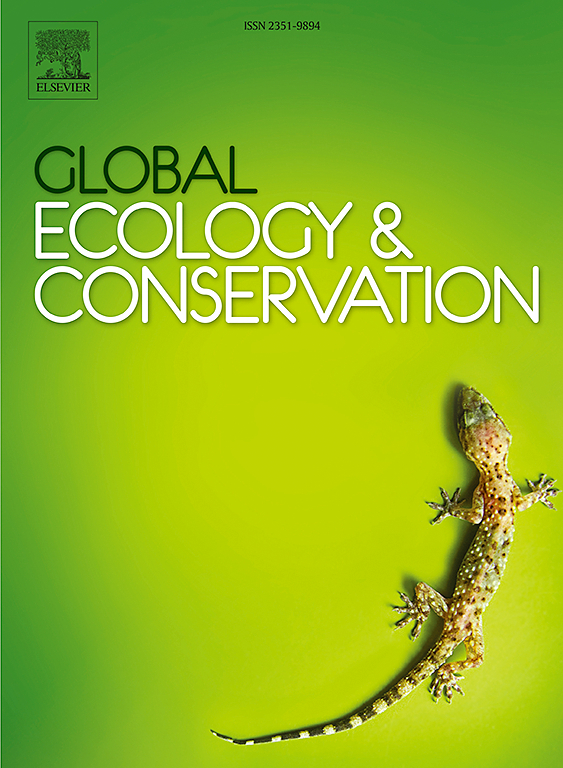Impact of landscape disturbance on butterfly communities: Diversity, distance dependence, and neutral model predictions
IF 3.5
2区 环境科学与生态学
Q1 BIODIVERSITY CONSERVATION
引用次数: 0
Abstract
Recent theoretical work suggests that rainforest biotas are not primarily structured by environmental determinism but rather by stochastic processes. We sampled butterflies from primary and disturbed (logged, and burnt) forest landscapes and compared diversity, examined geographic distance and dissimilarity relationships, and tested for deviations from neutral model predictions. Significant distance dependence was observed in all landscapes except one. All primary forest landscapes deviated significantly from neutral model predictions; in contrast, only one of the disturbed landscapes deviated significantly. Deviation from neutrality in primary forest suggests potentially important contributions of niche specialisation and/or competitive exclusion in structuring butterfly communities. Disturbances like logging or fires, which open up the forest, seem to push these communities toward neutrality with greater species richness and evenness than proximate primary forest. Multiple disturbance events, however, appear to lead to a loss of species while maintaining relatively high evenness and communities consistent with neutral model predictions. Furthermore, the butterfly communities of once- and twice-burnt landscapes appeared to consist of species with greater tolerances to disturbance or able to rebound following disturbance in addition to species, which entered from surrounding severely degraded habitat. Interestingly, a frequently-burnt landscape, now largely devoid of forest, aligned with neutral model predictions. This landscape contained a low-richness, highly impoverished fauna consisting of widespread generalists, but with relatively high evenness. We suggest that differentially disturbed habitats act as environmental filters to butterfly species, but that neutral processes dominate after environmental filtering.
求助全文
约1分钟内获得全文
求助全文
来源期刊

Global Ecology and Conservation
Agricultural and Biological Sciences-Ecology, Evolution, Behavior and Systematics
CiteScore
8.10
自引率
5.00%
发文量
346
审稿时长
83 days
期刊介绍:
Global Ecology and Conservation is a peer-reviewed, open-access journal covering all sub-disciplines of ecological and conservation science: from theory to practice, from molecules to ecosystems, from regional to global. The fields covered include: organismal, population, community, and ecosystem ecology; physiological, evolutionary, and behavioral ecology; and conservation science.
 求助内容:
求助内容: 应助结果提醒方式:
应助结果提醒方式:


